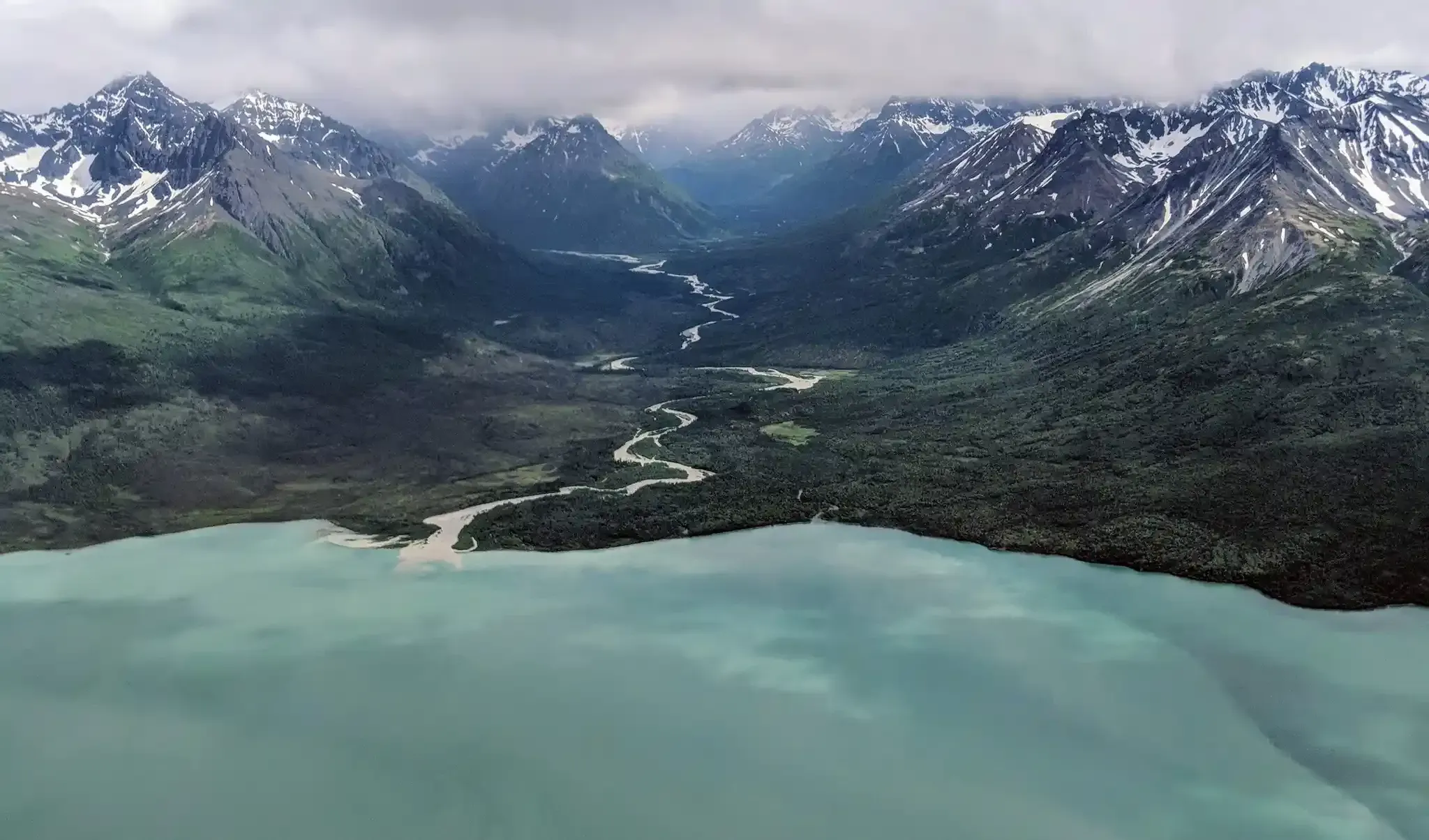Alaska, America’s last frontier, is renowned not only for its breathtaking natural landscapes but also as a haven for wildlife. With its vast expanse and ecological diversity, Alaska boasts some of the world’s largest animal reserves, where rare species are protected and thrive in their natural habitats. Join “Du lịch khắp thế gian” (Travel Around the World) as we explore the largest and most diverse wildlife reserves in Alaska, where you can witness firsthand the wondrous beauty of nature and the wild animal kingdom.
Discovering the Majesty of Alaska’s Animal Reserves
Alaska, one of the largest states in the United States, is largely covered by pristine forests, rugged mountains, magnificent glaciers, and untouched coastlines. This diverse terrain and climate create an ideal living environment for countless wildlife species. To protect this precious biodiversity, Alaska has established numerous animal reserves of varying sizes and significance. Among these, national parks and national preserves stand out as true “giants” in the field of nature and wildlife conservation.
These reserves are not only vast in area but also play a crucial role in maintaining natural ecosystems, protecting endangered species from extinction, and providing opportunities for visitors to explore and learn about the wild world. In Alaska, you’ll have the chance to wander into expansive reserves where brown bears fish for salmon, caribou migrate across the tundra, humpback whales breach in the ocean, and countless seabirds nest on coastal cliffs.
Wrangell-St. Elias National Park and Preserve
Spanning over 13 million acres (over 53,000 km²), Wrangell-St. Elias National Park and Preserve is not only the largest reserve in Alaska but also the largest national park in the United States. This area encompasses a dramatic array of towering mountains, vast glaciers, and boundless coniferous forests, creating a diverse habitat for numerous animal species.

Wrangell-St. Elias is home to many large mammal species, including black bears, brown bears, caribou, Dall sheep, and mountain goats. Notably, this area harbors one of the largest brown bear populations in North America. Visitors can participate in bear viewing tours to observe these giant brown bears in their natural habitat. Furthermore, Wrangell-St. Elias is inhabited by numerous bird species, including bald eagles, falcons, and various migratory birds.
Denali National Park and Preserve
Denali National Park and Preserve, famous for the majestic Denali (formerly known as McKinley) peak, is another vital animal reserve in Alaska. Encompassing over 6 million acres (over 24,000 km²), Denali protects a vast wilderness, ranging from taiga forests in the lowlands to alpine tundra and glaciers.

Denali is one of the best places in Alaska for wildlife viewing. Commonly sighted animals in Denali include grizzly bears, caribou, moose, wolves, and Dall sheep. The national park operates a bus system that takes visitors deep into the preserve, minimizing human impact on the environment and facilitating wildlife observation from a distance.
Gates of the Arctic National Park and Preserve
Gates of the Arctic National Park and Preserve, located entirely north of the Arctic Circle, is one of the most pristine and undisturbed areas on Earth. With an area of over 7 million acres (over 28,000 km²), Gates of the Arctic is a vast, roadless wilderness with no developed facilities, offering a truly wild experience for those seeking exploration.

Despite the harsh conditions, Gates of the Arctic is still home to various wildlife species, including caribou, grizzly bears, Arctic wolves, Arctic foxes, and numerous migratory birds. Due to its remote and inaccessible nature, exploring Gates of the Arctic requires careful preparation and backcountry travel experience. However, for those who love wilderness and seek true adventure, Gates of the Arctic is an unmissable destination.
Yukon Flats National Wildlife Refuge
Yukon Flats National Wildlife Refuge is a vast wetland area in central Alaska, formed by the Yukon River and its tributaries. Covering over 11 million acres (over 44,000 km²), Yukon Flats is one of the most important wetland reserves in North America, particularly for migratory birds.

Yukon Flats is a critical breeding ground for millions of waterfowl, including ducks, geese, swans, and shorebirds. In summer, the area comes alive with the calls of countless bird species. Besides birds, Yukon Flats is also inhabited by many mammal species, such as otters, beavers, muskrats, black bears, and caribou. Visitors can explore Yukon Flats by kayak or canoe, participate in birdwatching tours, and enjoy the peaceful beauty of this pristine wetland wilderness.
Lake Clark National Park and Preserve
Lake Clark National Park and Preserve, though lesser-known than other national parks in Alaska, is still a significant animal reserve with an area of over 4 million acres (over 16,000 km²). This national park is famous for the expansive Lake Clark, active volcanoes, and rich biodiversity.

Lake Clark provides an ideal habitat for numerous fish species, especially salmon, attracting brown bears to hunt. This national park is known as Alaska’s “brown bear kingdom,” with a very high density of brown bears. Visitors to Lake Clark have the opportunity to observe brown bears fishing for salmon, a unique and impressive wildlife spectacle. In addition to brown bears, Lake Clark is also home to black bears, wolves, lynx, otters, and many other bird species.
Conclusion
Alaska is not only an attractive tourist destination but also a priceless natural treasure, especially in the field of wildlife conservation. The largest animal reserves in Alaska play a vital role in protecting the planet’s biodiversity and offer us the chance to admire the wild beauty of nature. Come to Alaska to explore these vast animal reserves, immerse yourself in the wilderness, and experience unforgettable adventures. Undoubtedly, experiences in Alaska’s animal reserves will be cherished memories in your journey of exploring the world.